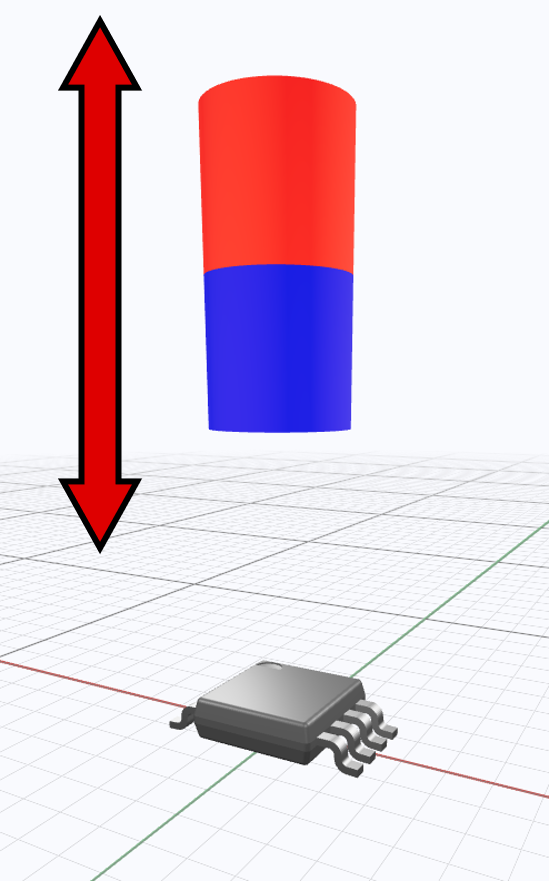SLYA076 july 2023 TMAG5273
2.3.2 Implementation Option 1: Floating Magnet with Linear Hall
One implementation involves placing the magnet in the float so that the magnet floats up and down vertically as the liquid level changes.
In the head-on orientation shown in Figure 2-4, the sensor is placed directly below the magnet so that the magnet moves towards and away from the sensor as the magnet floats up and down. More details on the head-on implementation can be found in the Head-on Linear Displacement Sensing Using Hall-Effect Sensors application brief.
In the slide-by orientation shown in Figure 2-5, the sensor is placed next to the magnet so that the magnet moves next to the sensor. Details on the slide-by displacement implementation can be found in the Tracking Slide-By Displacement with Linear Hall-Effect Sensors, application brief.
The fluid measurement range and resolution is restricted based on the size and strength of the magnet and the sensor sensitivity. This setup sometimes requires large magnets and thus a large floating piece. If the tank geometry results in a large distance, there can also be issues since the magnetic field reduces greatly the further it is away from the magnet. Both head-on and slide-by setups can work well if the system only needs to know when the tank is nearing empty, or if there is a tank that is shallow.
 Figure 2-4 Head-On
Figure 2-4 Head-On Figure 2-5 Slide-By
Figure 2-5 Slide-By